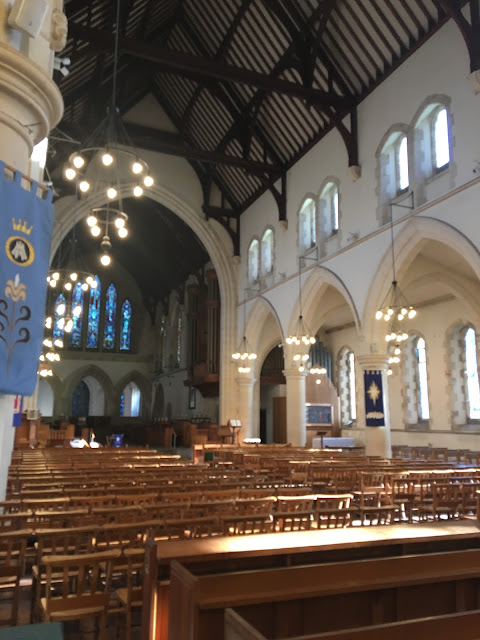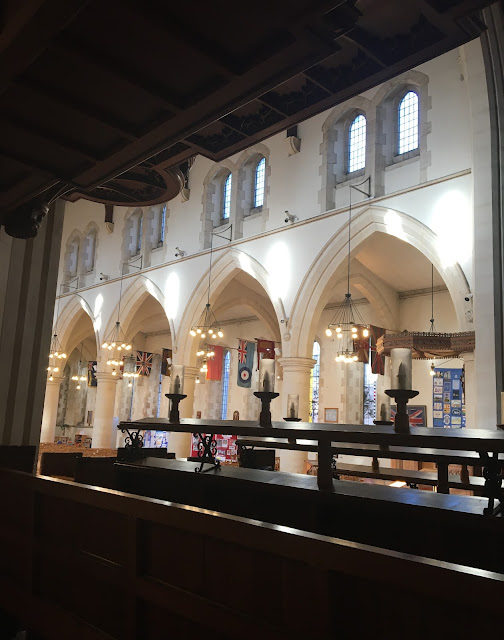Just a few pages from an old sketch book I found this morning while having a sort out. Mostly architectural: some sketches towards finished paintings and finally three architectural daydreams: a design for a street of houses; a reconstruction of the nave of Elgin cathedral, and sketch design for the rebuilding of the choir of the abbey church at Holyrood in best Late Scots Gothic. A bit presumptuous of me really.
Wednesday, 29 January 2025
Monday, 27 January 2025
Curently reading....
The novels in this simultaneous read are 'Lord Jim' by Joseph Conrad and 'Serotonin' by Michel Houellebecq. And what a difference a hundred years or so makes - from richness and complexity to something much more spare and lean, a observation both general and particular. But then Houellebecq is a much more polemical, if not downright feral novelist. Conrad, in comparison, a gentleman. Really, I can't think of such an ill-assorted pair. Amid so many glaring differences, yesterday evening (after I had published this little post) I realised that one of the subtle differences between these two novelists is that Houellebecq is writing in an age of consumerism and Conrad not. It is enough for a contemporary novelist in attempting to define a character merely throw in a few brands for the reader to have some idea as to the taste, social position and wealth of the person described. (I think it may have Ian Fleming who started this trend.)
Friday, 24 January 2025
Old House
Some pictures of my old house in Lincolnshire, some I posted on insta and others on here, and some have been languishing on a memory stick in my desk. Can't help regret that the 'project' was never finished. In retrospect it was, perhaps, one of the most integrated periods of my life.
Thursday, 16 January 2025
St Mary, Swansea
St Mary's is a big boned church. Victorian and hefty. Worldly. It stands on an old site in the centre of the city, the mother church of the city. However the original church has long disappeared, and the current church is the replacement of a replacement, and to be honest, doesn't move me much.
St Mary's is the work of Sir Arthur Blomfield (1829-99) - that prodigious but not exactly top-rank architect whom we have encountered before in Oundle. Alas this church, which dates from 1894-8, is one of his more pedestrian offerings. One can imagine any number of similar churches populating the Victorian suburbs of Britain, cold and dutiful. It replaces a Georgian church design by one of the Woodard brothers (William) who also designed St Anne's Bewdley. Judging by photograph evidence it was quite rustic structure, with little of the Baroque polish of St Anne's. The eastern chapel - the Herbert Chapel - escaped the fell hand of Woodward and Blomfield only to fall under the fell hand of the Blitz when St Mary's was gutted. The church was rebuilt (1954-9) by Sir Percy Thomas, Leslie Moore (the son of the great Temple Moore) having already resigned before work began. And Thomas's fell hand can be seen in the replacement for the Hebert Chapel - Gothic nearly stripped of all spirit, and feeling and looking like an electricity substation.
Happily the interior is altogether of a different order of things, though in much need of repair. Even George Pace who did behaved himself reasonable well at St Mary's - the only really jarring object is the font cover.
 |
Saturday, 11 January 2025
British Transport Films: Elizabethan Express
Elizabethan Express
1954
Cinematography Billy Williams
Producer Edgar Anstey
Tuesday, 7 January 2025
Last year in reading....
Happy New Year! The return of something I last did way back in 2016. I cannot believe it was quite so long ago. Anyway here is (as far as I can remember) my fiction reading from this last year. Discoveries were: 'Dr Zhivago', 'The Jewel in the Crown', and 'The Secret Agent'. 'Heretics of Dune', by Frank Herbert was, like 'God Emperor of Dune', was a much more impressive piece of fiction than 'Dune'. Only one real disappointment: 'Heat Wave' by Penelope Lively.














.JPG)
.JPG)






















